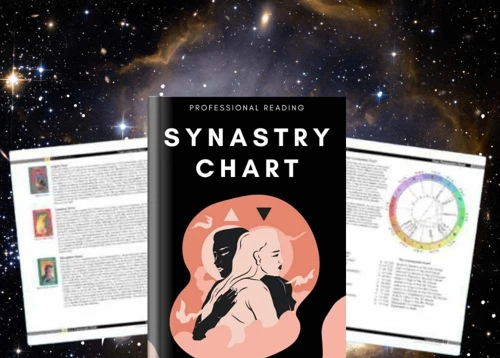Have you ever looked at a synastry chart and felt completely overwhelmed by the interaspects? Understanding the intricate web of connections between two people’s birth charts can be a daunting task, but fear not! In this article, we will guide you through the process of mastering the art of interpreting interaspects in synastry charts step-by-step. Whether you’re a beginner or an experienced astrologer, this comprehensive guide will provide you with the knowledge and tools you need to unlock the secrets hidden within these interaspects. So grab your astrological map and get ready to dive deep into the fascinating world of interaspect analysis!
What are Interaspects?
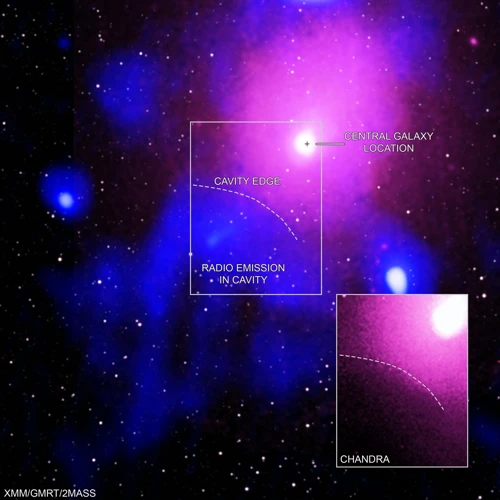
Interaspects are the connections formed between the planets in one person’s birth chart and the planets in another person’s birth chart in synastry. These interaspects represent the energetic exchanges and interactions between two individuals and provide valuable insights into the dynamics of their relationship. Each interaspect reveals a specific combination of planetary energies and influences that can affect various aspects of the relationship. By analyzing interaspects, astrologers can uncover the potential strengths, challenges, and areas of compatibility between two individuals. These connections can occur through various aspects such as conjunctions, trines, squares, and oppositions. Interaspects are a crucial component of synastry analysis, providing a deeper understanding of the intricate interplay between the two individuals’ charts. To fully grasp the significance of interaspects in synastry, it is essential to explore the individual meanings and characteristics of each planetary combination and aspect. By examining the interaspects in a synastry chart, astrologers can gain valuable insights into the complex dynamics and potential outcomes of a relationship.
Importance of Interaspects in Synastry
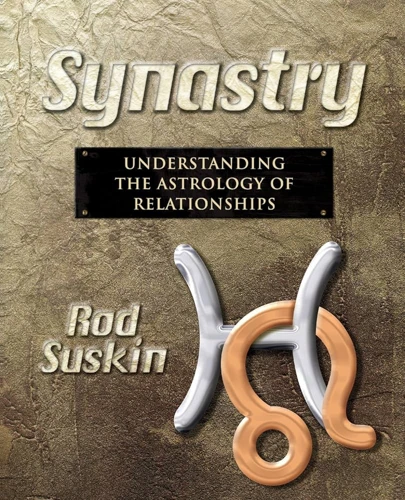
Interaspects play a vital role in synastry as they offer invaluable insights into the dynamics and compatibility between two individuals. The interaspects can reveal the following key aspects:
- Emotional connection: The interaspects between the Moon in one person’s chart and the Sun in the other person’s chart can indicate the emotional harmony and compatibility between them. This connection reflects the ability to understand and empathize with each other’s emotional needs and fosters a deep sense of emotional connection.
- Relational dynamics: The interaspects involving Venus and Mars in synastry shed light on the romantic and sexual dynamics between two individuals. The harmonious aspects such as trines or sextiles can signify passion, attraction, and mutual desire, while challenging aspects like squares or oppositions may indicate power struggles or conflicts in the relational dynamics.
- Communication style: The interaspects between Mercury in one person’s chart and Mercury in the other person’s chart provide insights into the compatibility of their communication styles and intellectual connection. Harmonious aspects can indicate a natural flow of ideas and effortless communication, while challenging aspects may lead to miscommunications or misunderstandings.
- Long-term compatibility: The interaspects involving Jupiter and Saturn in synastry can reveal the potential for long-term compatibility and the ability to support each other’s growth and stability. Beneficial aspects such as trines or sextiles can indicate a shared vision, mutual support, and the ability to build a solid foundation, while challenging aspects like squares or oppositions may signify conflicts in values or differences in approach to responsibilities.
Incorporating interaspects into synastry analysis allows astrologers to gain a more comprehensive understanding of the strengths, challenges, and overall compatibility between two individuals. By examining these cosmic connections, astrologers can provide valuable insights into the potential dynamics of a relationship and guide individuals towards nurturing and navigating their connection more effectively. Understanding the importance of interaspects in synastry analysis is essential for anyone seeking to delve into the depths of relationship astrology.
Key Interaspects to Consider
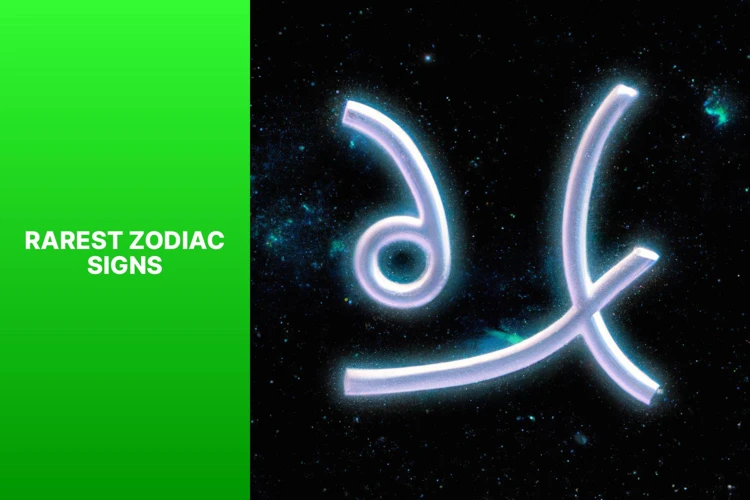
- Sun-Moon Interaspects: The connection between the Sun and the Moon in a synastry chart represents the core essence of the individuals involved. It reflects the compatibility of their emotional needs, desires, and life goals. This interaspect plays a vital role in the overall compatibility and emotional bond between partners.
- Venus-Mars Interaspects: The connection between Venus and Mars signifies the romantic and sexual chemistry between individuals. It represents passion, desire, and attraction in a relationship. This interaspect provides insights into the balance of love and desire, as well as the harmony or conflicts in the sexual dynamics between partners.
- Mercury-Mercury Interaspects: The Mercury-Mercury connection highlights the intellectual compatibility and communication style between individuals. It influences how effectively partners exchange thoughts, ideas, and information. This interaspect reveals the potential for intellectual harmony, stimulating conversations, and understanding in a relationship.
- Jupiter-Saturn Interaspects: The connection between Jupiter and Saturn represents the balance between expansion and restriction in a relationship. It reflects the potential for growth, stability, and long-term commitment. This interaspect indicates the compatibility of goals, values, and beliefs, as well as the balance between adventure and responsibility.
Understanding these key interaspects is essential for gaining deeper insights into the dynamics of a relationship. By examining the interactions between these influential planetary combinations, astrologers can uncover significant themes, challenges, and compatibility factors between two individuals. It’s important to analyze these interaspects in conjunction with other elements of the synastry chart, such as the importance of houses and other planetary placements, to paint a complete picture of the relationship dynamics.
Sun-Moon Interaspects
The Sun-Moon interaspects in synastry explore the compatibility and dynamics between the core aspects of an individual’s personality (the Sun) and their emotional needs and instincts (the Moon). These interaspects reveal the potential for emotional resonance, mutual understanding, and harmony between two individuals.
An interaspect between the Sun and Moon can occur through various aspects, such as conjunction, sextile, trine, square, or opposition. The nature of the aspect plays a significant role in understanding the dynamics of the relationship.
Conjunction: The Sun and Moon in conjunction in a synastry chart indicate a strong sense of emotional connection and shared life goals. This aspect fosters a deeper level of understanding and compatibility between partners.
Sextile and Trine: The sextile and trine aspects between the Sun and Moon suggest a natural ease and comfort in expressing emotions and understanding each other’s needs. These aspects contribute to emotional harmony and a strong sense of mutual support.
Square: The square aspect between the Sun and Moon signifies potential emotional tension and conflicting needs. While this aspect can bring challenges, it also presents an opportunity for growth and transformation by learning to navigate and integrate different emotional energies.
Opposition: The opposition between the Sun and Moon can create a dynamic push-pull effect in the relationship. It highlights differences in emotional needs and personality traits, which can lead to both intense attraction and challenges in finding balance and harmony.
Interpreting Sun-Moon interaspects requires considering the zodiac signs and houses involved. The zodiac signs reveal the characteristics of the Sun and Moon energies, while the houses shed light on the specific areas of life where the dynamics of the interaspects play out.
For example, a Sun-Moon conjunction in the 7th house may indicate a strong emotional bond and partnership orientation, while a Sun-Moon square in the 10th house could point to potential power struggles and conflicts regarding authority and career aspirations.
By analyzing the Sun-Moon interaspects in a synastry chart, astrologers can gain valuable insights into the emotional compatibility, needs, and challenges within a relationship. These interaspects help individuals understand their emotional dynamics, offering the opportunity to grow together and build a strong foundation.
Venus-Mars Interaspects
When Venus and Mars form interaspects in a synastry chart, it signifies a powerful combination of desire, passion, and attraction between two individuals. Venus represents love, beauty, and harmony, while Mars represents passion, sexuality, and assertiveness. The interplay between these two planets can greatly influence the dynamics of a relationship.
1. Venus conjunct Mars: This aspect creates a strong magnetic attraction between two individuals. There is a harmonious blending of Venusian qualities, such as love, romance, and creativity, with Martian qualities, such as passion, assertiveness, and sexual energy. This interaspect indicates a strong physical and emotional connection, intensifying the romantic and sexual chemistry in the relationship.
2. Venus trine Mars: This aspect signifies a harmonious and balanced blending of feminine and masculine energies. It fosters a sense of ease and compatibility between two individuals, promoting mutual appreciation, affection, and shared values. There is a natural alignment of desires and passions, creating a supportive and passionate bond in the relationship.
3. Venus square Mars: This aspect can bring a mixture of attraction and challenges in a relationship. The strong magnetic pull and intense desire between two individuals can sometimes lead to power struggles, conflicts, and clashes of ego. However, if both partners can navigate the tensions and find a balance between their differing needs and desires, this interaspect can provide an opportunity for personal growth and transformation within the relationship.
4. Venus opposite Mars: This aspect can create a dynamic push-pull energy between two individuals. There is a strong attraction and sexual tension, but also a potential for conflicts and opposing desires. This interaspect challenges the individuals to find a balance between their own needs and the needs of their partner. With open communication and compromise, these challenges can lead to a deeper understanding and strengthening of the relationship.
Exploring the Venus-Mars interaspects in a synastry chart can provide valuable insights into the balance of love, passion, desire, and harmonious dynamics within a relationship. Understanding these aspects helps astrologers and individuals involved gain a deeper understanding of the potential strengths and challenges they may encounter in their romantic connection. To fully comprehend the significance of Venus-Mars interaspects and their impact on a relationship, it is important to consider the overall elements of the synastry chart and the other interaspects involved.
Mercury-Mercury Interaspects
in synastry involve the connections and interactions between the Mercury placements in the birth charts of two individuals. The planet Mercury is associated with communication, intellect, and mental processes. When analyzing Mercury-Mercury interaspects, astrologers look at how the individuals communicate, exchange ideas, and understand each other’s thoughts and perspectives.
A harmonious Mercury-Mercury aspect, such as a trine or sextile, indicates a natural flow of communication and mental compatibility between the individuals. They may have a strong intellectual connection, easily understanding and appreciating each other’s ideas and viewpoints. These aspects foster open and effective communication, making it easier for the individuals to express themselves, share information, and engage in meaningful conversations.
On the other hand, challenging Mercury-Mercury aspects, such as a square or opposition, can lead to misunderstandings, miscommunications, and differences in thinking styles. These aspects may indicate clashes in communication, with the individuals having contrasting ideas or struggling to understand each other’s perspectives. It is important for them to work on improving communication skills and finding common ground to ensure effective and harmonious exchanges of ideas.
The placement of Mercury in the signs and houses of the respective birth charts further adds depth to the interpretation of Mercury-Mercury interaspects. The sign placement of Mercury highlights the individuals’ approach to communication, their thinking patterns, and their intellectual interests. The house placement of Mercury indicates the area of life where communication and mental activities are emphasized and where the individuals are likely to focus their intellectual energies.
Mercury-Mercury interaspects provide valuable insights into the intellectual compatibility and communication dynamics between two individuals. Understanding these interaspects allows for a deeper understanding of how ideas are exchanged, conversations flow, and mental connections are established in a relationship.
Jupiter-Saturn Interaspects
- Conjunction (0 degrees): When Jupiter and Saturn are in conjunction in synastry, it signifies a blend of expansion and restriction within the relationship. This interaspect can create a push-pull dynamic as the optimistic and adventurous energy of Jupiter clashes with the disciplined and conservative nature of Saturn. The individuals may have different approaches to growth and may need to find a balance between taking risks and grounding themselves in reality.
- Trine (120 degrees): A Jupiter-Saturn trine indicates a harmonious flow of energy between the individuals. This interaspect brings together the expansive qualities of Jupiter with the practical and structured qualities of Saturn. It suggests that the individuals can support and encourage each other’s growth and success. With this aspect, they may find a balance between taking calculated risks and being mindful of long-term stability.
- Square (90 degrees): When Jupiter and Saturn form a square aspect in synastry, there may be a clash between the individuals’ philosophies or approaches to life. This interaspect can create tension and challenges within the relationship, as the expansive and optimistic energy of Jupiter may conflict with the cautious and structured energy of Saturn. It is essential for the individuals to find a way to reconcile their differences and work together towards common goals.
- Opposition (180 degrees): In synastry, a Jupiter-Saturn opposition can highlight a polarity between the individuals’ beliefs, goals, or philosophies. This interaspect can create a dynamic where one person acts as the risk-taker and optimist (Jupiter), while the other person assumes the role of the cautious and practical one (Saturn). Finding a balance between these opposing energies is crucial for the relationship to thrive. Both individuals may need to learn from each other and integrate a more balanced approach to life.
Exploring the specific interaspects between Jupiter and Saturn in a synastry chart can provide valuable insights into the dynamics of a relationship. Whether it is a conjunction, trine, square, or opposition, each interaspect brings its own set of challenges and opportunities for growth. It is essential to consider these interaspects along with other elements of the synastry chart, such as planetary placements, aspects, and the houses involved, to gain a more comprehensive understanding of the relationship’s dynamics. By exploring the interplay between Jupiter and Saturn in synastry, astrologers can provide valuable guidance and insights for individuals seeking to navigate their relationships.
Interpreting Interaspects
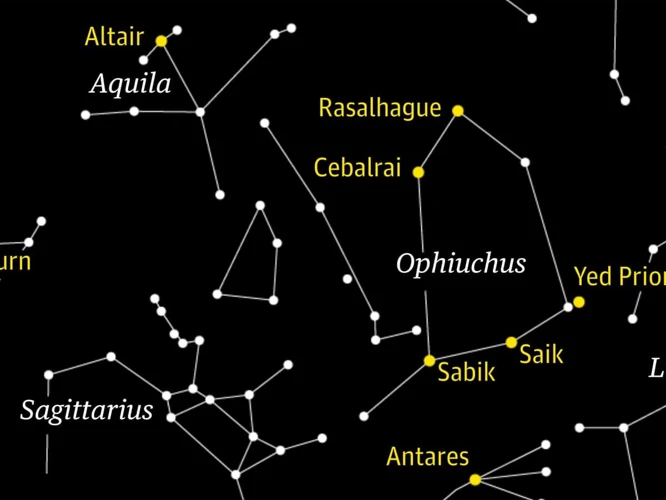
Interpreting interaspects in synastry charts is a multi-faceted process that involves understanding the energy exchange, examining the sign and house placements, assessing the orb and aspect patterns, and considering the natal chart factors. To begin, it is crucial to grasp the dynamics and interactions between the planetary energies involved in the interaspect. Each combination brings forth unique qualities and influences, shaping the overall dynamics of the relationship. Analyzing the sign and house placements provides further insights into the specific areas of life that are impacted by these interaspects. The orb and aspect patterns give indications of the strength and intensity of the connection, as well as any additional complexities that may arise. Lastly, it is essential to take into account the individual’s natal chart factors, such as the overall chart compatibility and any personal planets or angles involved. By delving deep into these aspects, astrologers can gain a comprehensive understanding of the interaspects and their significance within the context of the relationship. For a better understanding, it is recommended to refer to other articles discussing synastry chart elements and synastry charts astrology.
Understanding the Energy Exchange
When interpreting interaspects in synastry charts, it is crucial to understand the energy exchange between the planets involved. Each planet represents a specific type of energy and expression, and when two planets form an interaspect, their energies interact and influence each other.
To grasp the energy exchange, consider the following factors:
- Aspect Type: The type of aspect formed between the planets determines the nature of the energy exchange. For example, a harmonious aspect like a trine or sextile indicates ease and compatibility, while a challenging aspect like a square or opposition suggests tension and potential conflict.
- Planetary Significations: Each planet has its own significations and represents different areas of life. Understanding these significations can help interpret how the planetary energies manifest in the relationship. For instance, the Sun represents the ego and core identity, while Venus signifies love and relationships.
- Orb: The orb refers to the acceptable range of degrees for an aspect to be considered valid. A tight orb suggests a stronger and more noticeable energy exchange, while a wider orb may indicate a milder influence.
- Planetary Dominance: Assessing which planet is more dominant or influential in the aspect can provide insight into power dynamics within the relationship. For example, if one person’s Mars is in tight conjunction with the other person’s Sun, the Mars energy may strongly influence the expression of the Sun person’s identity.
By thoroughly analyzing the energy exchange in interaspects, astrologers can gain an in-depth understanding of the dynamics and potential challenges between two individuals in a relationship. This knowledge allows for a more nuanced interpretation of the synastry chart and can provide valuable guidance for navigating the complexities of the relationship.
Examining Sign and House Placement
When interpreting interaspects in a synastry chart, one essential factor to consider is the sign and house placement of the planets involved. The sign represents the quality and characteristics of the energy expressed by the planet, while the house represents the area of life where that energy is likely to manifest. By analyzing the sign and house placement, you can gain deeper insights into how the planetary energies interact within the relationship.
To examine the sign and house placement, start by identifying the planets involved in the interaspect. Then, observe the signs in which these planets are located. Each sign has its unique qualities, elements, and ruling planets, which influence the expression of the planet’s energy. For example, a Sun in Leo may bring confidence, creativity, and a desire for recognition, while a Sun in Cancer may bring sensitivity, emotional depth, and a focus on nurturing.
Next, notice the house placement of the planets. The houses in astrology represent different areas of life, such as career, relationships, home, or spirituality. For instance, a Venus in the 7th house suggests a focus on partnerships and a desire for harmony and balance in relationships, while a Venus in the 2nd house may indicate a connection between love and material possessions.
Examining the sign and house placement of the planets in the interaspect provides valuable information about how the energies of the individuals involved interact in specific areas of life. It helps to understand the underlying motivations, needs, and sources of compatibility or challenges within the relationship.
Here is a breakdown of sign and house placements for each planet involved in the interaspect:
Sun: Look for the sign and house placement to gain insights into the core essence, ego expression, and vitality within the relationship.
Moon: Observe the sign and house placement to understand emotions, nurturing qualities, and the instinctive responses of each individual.
Venus: Examine the sign and house placement to uncover the nature of love, beauty, harmony, and the desire for connection within the relationship.
Mars: Analyze the sign and house placement to reveal the dynamics of passion, assertiveness, and how both individuals express their desires and take action.
Mercury: Consider the sign and house placement to understand communication styles, intellectual compatibility, and the exchange of information within the relationship.
Jupiter: Explore the sign and house placement to uncover the areas of growth, expansion, beliefs, and shared values within the relationship.
Saturn: Look at the sign and house placement to understand responsibilities, commitments, and areas where limitations or challenges may arise within the relationship.
Analyzing the sign and house placement of the planets involved in interaspects allows for a more comprehensive interpretation of the exchange of energies between two individuals. It offers valuable insights into the specific areas of life where compatibility or friction may occur, providing a deeper understanding of the relationship dynamics. Remember, the interpretation should consider the overall context of the whole synastry chart to paint a more detailed and accurate picture of the relationship.
Assessing Orb and Aspect Patterns
When interpreting interaspects in synastry charts, it’s crucial to consider the orbs and aspect patterns present. The orb refers to the maximum distance allowed between two planets or points to consider them in aspect. A tighter orb indicates a stronger influence and more significant impact on the relationship. It’s common to use a range of 5 to 10 degrees for major aspects, such as conjunctions, oppositions, and squares, and a smaller orb for minor aspects like trines and sextiles.
In addition to orb, examining the aspect patterns formed by interaspects can provide valuable information. Aspect patterns are geometric configurations created by the interaspects in a chart and can add complexity or intensity to the relationship dynamics. Some common aspect patterns in synastry include the Grand Cross, T-Square, Yod, and Grand Trine.
To assess orb and aspect patterns effectively, follow these steps:
- Calculate the exact degrees between the planets in the interaspect.
- Compare the degree measurements to determine if they fall within the specified orb range for each aspect.
- Take note of any aspect patterns that may form, such as a cluster of squares, oppositions, or trines.
- Analyze the orb and aspect patterns in conjunction with the nature of the planets involved to gain a deeper understanding of the energy exchange between the individuals.
By carefully assessing the orb and aspect patterns in synastry charts, you can uncover significant astrological dynamics and gain insights into the potential challenges and strengths within a relationship.
Considering the Natal Chart Factors
is an essential step in interpreting interaspects in synastry. While analyzing the interaspects between two charts, it is crucial to take into account the individual natal chart factors of each person involved. The natal chart factors include the positions of the planets, signs, and houses at the time of birth. These factors play a significant role in shaping an individual’s personality, motivations, and desires. When examining interaspects, it is important to consider how the planetary energies in each person’s natal chart interact with the interaspects formed in the synastry chart. For example, if one person’s Sun in Aries is closely conjunct the other person’s Moon in Aries, it indicates a strong alignment of core identities and emotional needs between the individuals. However, if one person’s Venus in Libra is in a square aspect to the other person’s Pluto in Capricorn, it suggests potential challenges and power struggles in the realm of relationships and values. By examining the natal chart factors, astrologers can gain deeper insights into the individual motivations, desires, and potential areas of compatibility or conflict between the two individuals. It is essential to examine both the synastry chart and the natal chart factors to paint a comprehensive picture of the relationship dynamics.
Common Interaspect Combinations

When analyzing synastry charts, certain interaspect combinations come up more frequently and carry particular significance in relationship astrology. These common interaspect combinations shed light on the dynamics and potential outcomes of a relationship. For example, the Sun conjunct Moon interaspect signifies a deep emotional connection and a sense of shared purpose between two individuals, while Venus trine Mars indicates a harmonious blend of passion and desire. On the other hand, Mercury square Mercury suggests potential communication challenges and intellectual clashes, while Jupiter opposite Saturn points to a dynamic of expansion and restriction. These common interaspect combinations provide astrologers with valuable insights into the strengths and challenges within a relationship, offering guidance on how to navigate and work with the energies at play. By understanding these common interaspect combinations, astrologers can deepen their analysis and provide more accurate interpretations for individuals seeking guidance in their relationships.
Sun Conjunct Moon
The Sun conjunct Moon interaspect is a significant and powerful connection in synastry. When the Sun of one person’s birth chart is in close proximity to the Moon of the other person’s birth chart, it symbolizes a strong sense of emotional connectedness and compatibility. This interaspect represents a blending of the conscious ego (Sun) and the emotional needs and instincts (Moon) of the individuals involved. The Sun-Moon conjunction enhances mutual understanding, empathy, and emotional resonance between partners. It fosters a deep emotional bond and a sense of emotional security in the relationship. People with this interaspect often have a natural understanding of each other’s emotional states and needs, making it easier to form a strong emotional foundation in the partnership. Additionally, the Sun-Moon conjunction can bring a harmonious balance between the masculine and feminine energies within the relationship. It symbolizes a union of the inner self (Moon) and the outward expression of identity and purpose (Sun). This interaspect promotes alignment and cooperation between partners, resulting in a sense of shared values, goals, and emotional fulfillment. However, it is important to note that the intensity of the Sun-Moon conjunction can also amplify emotional sensitivity and potential conflicts if not managed effectively. Understanding and nurturing the emotional needs of both partners is crucial for maintaining a harmonious and fulfilling relationship.
Venus Trine Mars
When examining the interaspect of Venus trine Mars in a synastry chart, we encounter a harmonious and passionate connection between the individuals involved. This aspect creates a strong attraction and sparks a deep sense of passion and romance in the relationship. The energy of Venus, representing love, beauty, and sensuality, flows effortlessly with the assertive and assertive drive of Mars. Together, these planets create a harmonious blend of love and desire. The Venus trine Mars aspect fosters a sense of compatibility and mutual understanding, as both individuals feel a strong emotional connection and share similar desires and values in matters of love and romance. This aspect brings a natural ease in expressing affection and desire for one another. It enhances the sexual chemistry and physical attraction, leading to a satisfying and fulfilling sexual relationship. The individuals in this synastry may find themselves deeply attracted to each other, feeling a strong sense of excitement and inspiration in their interactions. This interaspect promotes strong communication and the ability to work together harmoniously, making it an ideal aspect for building a lasting and passionate partnership.
Mercury Square Mercury
is a powerful interaspect that brings both intellectual stimulation and potential challenges to a relationship. When Mercury, the planet of communication, forms a square aspect with another person’s Mercury in synastry, it indicates a clash or tension in the way the individuals think, communicate, and process information.
This aspect can manifest as differences in communication style, cognitive approaches, and mental interests. While it may create initial misunderstandings or arguments, it also presents an opportunity for growth and learning through open and honest communication.
Individuals with Mercury Square Mercury may have different ways of expressing themselves, leading to potential misunderstandings or misinterpretations. They may find it challenging to see eye to eye, which can result in frequent debates or heated discussions. However, this aspect also encourages mental stimulation, as the clash of ideas can lead to expanded perspectives and new insights.
In order to navigate the potential challenges of this aspect, it is important for both individuals to practice active listening, empathy, and patience. Finding common ground and respect for each other’s perspectives is crucial. Through effective communication and a willingness to bridge the gap, partners can overcome the obstacles presented by Mercury Square Mercury and develop a deeper understanding of each other’s thoughts and ideas.
Jupiter Opposite Saturn
When Jupiter and Saturn form an opposition in synastry, it creates a powerful dynamic between expansion (Jupiter) and restriction (Saturn). This interaspect highlights the tension and differences in philosophies, beliefs, and approaches to life between two individuals. The opposition aspect signifies polarities and indicates a push-pull effect in the relationship. Here are some key points to consider when interpreting the Jupiter Opposite Saturn interaspect:
- Clash of Ideals: Jupiter represents optimism, growth, and expansion, while Saturn represents limitations, responsibilities, and structure. The clash of these energies can lead to conflicting viewpoints and values within the relationship. It is important to find a balance between the desire for freedom and the need for stability.
- Push for Growth: Despite the inherent challenges, this interaspect can stimulate personal and spiritual growth. The tension and contrast between Jupiter and Saturn can push individuals to confront their limitations, overcome obstacles, and seek a higher purpose together.
- Struggles with Authority: Jupiter represents a desire for freedom and exploration, while Saturn represents authority and rules. This interaspect can bring up power struggles and conflicts surrounding issues of control and responsibility within the relationship.
- Opportunities for Learning: The Jupiter Opposite Saturn interaspect presents opportunities for learning and personal development. It encourages individuals to embrace discipline, patience, and perseverance in pursuit of their goals. By finding common ground and integrating the energies of Jupiter and Saturn, individuals can foster growth and find a sense of balance within the relationship.
Remember, the interpretation of interaspects should always take into account the entire synastry chart and the overall dynamics between the two individuals. The Jupiter Opposite Saturn aspect is just one piece of the puzzle in understanding the complexities of a relationship.
Case Studies
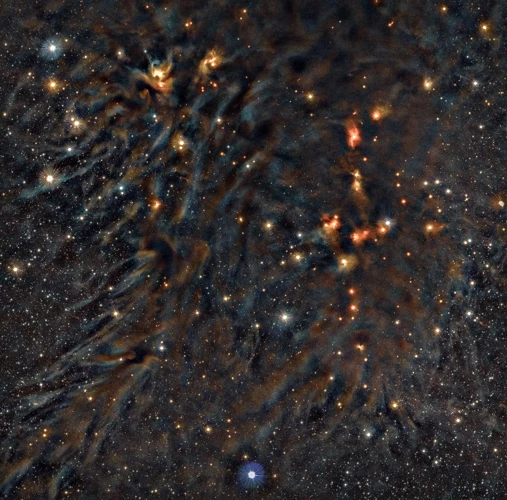
Case studies provide real-life examples and practical applications of interpreting interaspects in synastry charts. Through analyzing specific scenarios, we can gain a deeper understanding of how interaspects manifest in relationships. Let’s explore two case studies:
- Example 1: John and Sarah: In this case, John’s Sun is conjunct Sarah’s Moon. This interaspect signifies a deep emotional connection and mutual understanding between them. Their identities and emotional needs align, creating harmony and compatibility. They have a natural ability to support and nurture each other, leading to a strong emotional bond.
- Example 2: Lisa and Mark: In this case, Lisa’s Venus is trine Mark’s Mars. This interaspect indicates a powerful attraction and passion between them. Their energies complement each other, creating a sense of ease and harmony in their romantic and sexual relationship. They have a natural ability to express love and desire openly.
By studying these case studies and examining the specific interaspects involved, astrologers can better understand the dynamics and potential outcomes of various relationships. It is important to note that while these case studies provide valuable insights, each relationship is unique, and a comprehensive analysis should consider other factors in the synastry chart as well.
Example 1: John and Sarah
Let’s take a closer look at an example synastry chart between John and Sarah to understand the power of interaspects in analyzing relationships. In this case, John’s Sun is in conjunction with Sarah’s Moon. This aspect signifies a deep emotional connection and a strong sense of compatibility between them. The Sun represents one’s core identity and vitality, while the Moon represents emotions and inner feelings. With this interaspect, Sarah feels understood and supported by John on a fundamental level, which contributes to a sense of emotional security in their relationship. John, on the other hand, is drawn to Sarah’s nurturing nature and finds comfort in her emotional availability. This Sun-Moon interaspect acts as a foundation for their relationship, allowing them to easily connect on an emotional and intuitive level. It is important to note that the interpretation of interaspects should not be viewed in isolation but considered in conjunction with other factors in the synastry chart, such as the house placement and other interaspects. By examining the interaspects in John and Sarah’s chart, we gain insight into the dynamics and potential areas of compatibility in their relationship.
Example 2: Lisa and Mark
In the case study of Lisa and Mark, their synastry chart reveals a fascinating interaspect combination between their Sun and Moon. Lisa’s Sun is in Taurus, while Mark’s Moon is in Taurus as well. This Sun-Moon conjunction forms a strong bond between them, as their emotional needs and nurturing styles align harmoniously. They intuitively understand each other’s desires and can provide the stability and emotional support that both crave. This interaspect fosters a deep sense of emotional security and mutual respect in their relationship. Additionally, their Sun-Moon conjunction falls in Lisa’s 7th house, indicating that their partnership plays a significant role in her life. The 7th house represents relationships and partnerships, and with the Sun and Moon forming this interaspect in that house, there is a strong emphasis on the importance of their connection to Lisa’s overall personal growth and fulfillment. As they navigate the ups and downs of life together, this interaspect provides a solid foundation for their love and emotional connection.
Tips for Mastering Interaspect Interpretation
Mastering the interpretation of interaspects in synastry charts requires a combination of knowledge, intuition, and practice. To enhance your skills in this area, here are some valuable tips to consider. First, focus on developing your intuition and sensitivity. Astrology is an intuitive art, and honing these skills will allow you to delve deeper into the energies and dynamics revealed by the interaspects. Second, study historical examples and publications. By examining how interaspects have manifested in real-life relationships, you can gain valuable insights and expand your understanding of their implications. Third, make use of reliable astrology software and resources. Having access to accurate birth data and advanced analysis tools will greatly assist you in interpreting interaspects with precision. With these tips in mind, you’ll be well on your way to becoming a master at interpreting the intricate interplay of interaspects in synastry charts.
Developing Intuition and Sensitivity
Developing intuition and sensitivity is crucial when it comes to mastering the art of interpreting interaspects. While astrology provides a structured framework for analysis, it is equally important to tap into your intuition and harness your sensitivity to subtle energies. Intuition allows you to go beyond the surface-level meanings of the interaspects and delve into their deeper, symbolic significance. It helps you connect the dots and uncover the hidden layers of meaning within the interaspects. Cultivating your intuition involves quieting the mind, being receptive to subtle energies, and trusting your inner guidance. Meditation, journaling, and other mindfulness practices can be helpful in developing your intuitive abilities.
Sensitivity, on the other hand, involves being attuned to the emotional and energetic cues present in the interaspects. It requires being open to the nuances of human behavior and the subtle shifts in energy that occur within relationships. Sensitivity allows you to pick up on the underlying emotions, motivations, and desires that are reflected in the interaspects. By honing your sensitivity, you can develop a deeper understanding of the emotional dynamics at play between individuals.
When interpreting interaspects, pay attention to your gut feelings, emotional responses, and subtle impressions that arise. Trust the intuitive flashes and insights that come to you. Allow your intuition and sensitivity to guide you as you explore the complex web of interaspects in a synastry chart. Remember, astrology is as much an art as it is a science, and your intuitive abilities are invaluable tools in unlocking the deeper meanings hidden within the interaspects.
Studying Historical Examples and Publications
Studying historical examples and publications can be an invaluable tool for mastering the art of interpreting interaspects in synastry charts. By delving into the works of renowned astrologers and exploring the relationships of famous individuals throughout history, you can gain a deeper understanding of how interaspects manifest in real-life scenarios. Historical examples provide a wealth of knowledge and insight into the complexities and dynamics of different relationships.
One approach is to study the synastry charts of well-known couples whose relationships have been widely documented and analyzed. By examining the interaspects in these relationships, you can observe how different planetary combinations and aspects manifest in the context of a romantic partnership. Look for patterns, commonalities, and connections that may shed light on the dynamics of interaspects.
Additionally, reading astrology publications and books that focus on synastry analysis can offer valuable insights and interpretations. These resources often provide case studies, interpretations, and detailed analyses of interaspects in various relationships. By studying different approaches and perspectives, you can expand your knowledge and develop a more comprehensive understanding of how to interpret interaspects.
When studying historical examples and publications, it’s important to approach them with a critical mind and consider the context in which the interpretations were made. Remember that every relationship is unique, and the dynamics between individuals can vary significantly. Use historical examples and publications as a guide and source of inspiration, but always rely on your own intuition and interpretation skills when analyzing interaspects in synastry charts.
Using Reliable Astrology Software and Resources
When it comes to interpreting interaspects in synastry charts, having reliable astrology software and resources at your disposal can greatly enhance your understanding and accuracy. Here are some tips for effectively utilizing these tools:
- Choose a reputable astrology software: Invest in a high-quality astrology software program that provides accurate chart calculations, aspect calculations, and interpretation features. Look for software that offers a user-friendly interface, customizable options, and reliable data sources.
- Explore online astrology resources: The internet offers a wealth of astrology resources, including websites, forums, and online communities. Look for websites that provide detailed interpretations of interaspects and synastry analysis. Join astrology forums or Facebook groups dedicated to synastry, where you can engage with knowledgeable astrologers and seek guidance.
- Refer to astrological textbooks and publications: Expand your knowledge and understanding of interaspects by reading books and publications written by reputable astrologers. Look for comprehensive texts that delve into the intricacies of synastry analysis and provide insights into specific interaspect combinations.
- Attend astrology workshops and conferences: Participating in astrology workshops or conferences can provide valuable learning opportunities. These events often feature experienced astrologers who share their expertise and insights into interpreting interaspects. Networking with fellow attendees can also offer a chance to exchange knowledge and experiences.
- Consult with experienced astrologers: If you’re new to interpreting interaspects or struggling with a complex synastry chart, seeking guidance from an experienced astrologer can be immensely helpful. They can provide personalized insights and interpretations based on their expertise and experience.
By utilizing reliable astrology software and resources, you can enhance your interpretation skills and gain a deeper understanding of interaspects in synastry charts. Remember to approach these tools and resources with an open mind, always questioning and cross-referencing information to ensure accuracy and authenticity.
Conclusion
In conclusion, mastering the art of interpreting interaspects in synastry charts is a transformative skill that can deepen your understanding of relationships and astrological dynamics. By analyzing the interconnections between the planets in two individuals’ birth charts, you can uncover valuable insights into compatibility, strengths, and challenges within a relationship. To become adept at interpreting interaspects, it is crucial to grasp the significance of energy exchanges, sign and house placements, orb and aspect patterns, and natal chart factors. Additionally, studying common interaspect combinations and real-life case studies can enhance your interpretation skills. Remember to develop your intuition and sensitivity, study historical examples and publications, and utilize reliable astrology software and resources. With practice and dedication, you can unlock the intricacies of interaspects and provide profound insight into the dynamics of relationships. So, embark on this fascinating journey of interaspect interpretation and unravel the secrets hidden within synastry charts.
Frequently Asked Questions
What role do interaspects play in synastry?
Interaspects play a crucial role in synastry as they reveal the energetic exchanges and interactions between two individuals’ birth charts. They provide insights into the dynamics, compatibility, and potential challenges within a relationship.
How do interaspects affect a relationship?
Interaspects can affect a relationship by highlighting areas of compatibility, shared interests, and potential challenges. They indicate the areas where the individuals’ energies align or clash, influencing the overall dynamics and quality of the relationship.
What are some common interaspect combinations to look out for?
Some common interaspect combinations include Sun conjunct Moon, Venus trine Mars, Mercury square Mercury, and Jupiter opposite Saturn. These combinations often hold significant influence over the relationship dynamics and can provide valuable insights into the compatibility between two individuals.
How can I interpret interaspects effectively?
To interpret interaspects effectively, it is important to consider the energy exchange, sign and house placement, orb and aspect patterns, and the individual’s natal chart factors. By examining these factors, you can gain a deeper understanding of the potential impact of the interaspects on the relationship.
Do all interaspects in synastry have the same impact?
No, not all interaspects have the same impact in synastry. The nature of the aspects, the planets involved, and their individual characteristics all contribute to the overall influence of the interaspects on the relationship. Some interaspects may have a more harmonious or challenging effect compared to others.
Can interaspects change or evolve over time?
Interaspects can change or evolve over time as individuals grow and develop. Their personal experiences, choices, and external influences can alter the expression of the interaspects within the relationship. Regular updates and analysis of the synastry chart can reflect these changes.
Can interaspects indicate the longevity of a relationship?
Interaspects can provide insights into the potential longevity of a relationship. Harmonious interaspects may indicate compatibility and support, while challenging interaspects may indicate areas of conflict and potential relationship hurdles. However, other astrological factors should also be considered when assessing the longevity of a relationship.
Can interaspects indicate soulmate connections?
Interaspects can give indications of soulmate connections by highlighting deep connections, intense attractions, and shared soul lessons. Harmonious interaspects between key planets such as the Sun, Moon, Venus, and Mars can suggest a strong soulmate connection within a relationship.
How can I improve my understanding of interaspects?
You can improve your understanding of interaspects by developing intuition and sensitivity, studying historical examples and publications, and using reliable astrology software and resources. Regular analysis and interpretation of interaspects in synastry charts will also contribute to your knowledge and expertise.
Are interaspects the only important factor in synastry analysis?
No, interaspects are not the only important factor in synastry analysis. Other elements such as house placements, planetary aspects, and the overall chart compatibility should also be considered. Interaspects provide valuable insights, but a comprehensive analysis should involve a holistic examination of all relevant factors.

